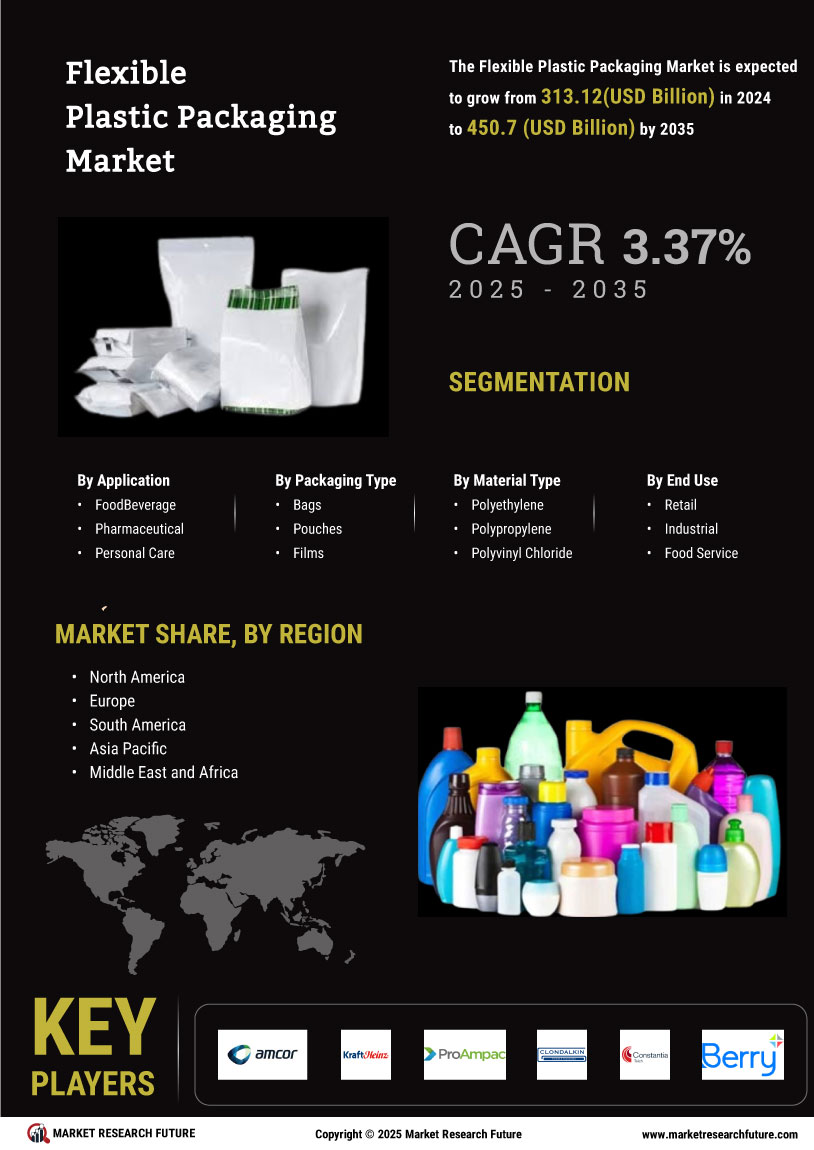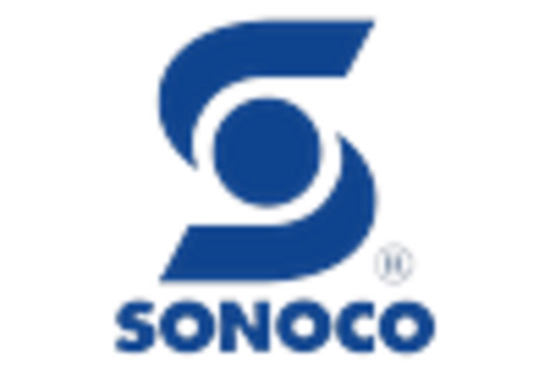E-commerce Influence
The rapid expansion of e-commerce is significantly influencing the Flexible Plastic Packaging Market. As online shopping continues to gain traction, the demand for efficient and protective packaging solutions is on the rise. In 2025, e-commerce sales are projected to surpass 6 trillion USD, necessitating innovative packaging that ensures product safety during transit. Flexible plastic packaging offers advantages such as lightweight design and space efficiency, which are crucial for shipping and storage. Additionally, the ability to customize packaging for various products enhances the consumer experience, further driving demand. This trend underscores the importance of flexible packaging solutions in meeting the evolving needs of the e-commerce sector, thereby propelling growth in the Flexible Plastic Packaging Market.
Sustainability Initiatives
The increasing emphasis on sustainability is a pivotal driver for the Flexible Plastic Packaging Market. As consumers become more environmentally conscious, companies are compelled to adopt eco-friendly packaging solutions. This shift is reflected in the rising demand for biodegradable and recyclable materials, which are becoming integral to packaging strategies. In 2025, it is estimated that the market for sustainable packaging will reach approximately 400 billion USD, indicating a robust growth trajectory. Furthermore, regulatory pressures aimed at reducing plastic waste are prompting manufacturers to innovate and invest in sustainable practices. This trend not only enhances brand reputation but also aligns with consumer preferences, thereby driving growth in the Flexible Plastic Packaging Market.
Consumer Convenience Trends
The growing demand for convenience among consumers is a significant driver for the Flexible Plastic Packaging Market. As lifestyles become increasingly fast-paced, consumers are seeking packaging solutions that offer ease of use and portability. Flexible plastic packaging, with its lightweight and resealable features, caters to this need effectively. In 2025, the convenience food sector is expected to grow by 20%, further propelling the demand for flexible packaging solutions. Additionally, the ability to create single-serve portions and easy-to-open designs enhances the consumer experience, making products more appealing. This trend towards convenience not only influences purchasing decisions but also drives innovation in the Flexible Plastic Packaging Market.
Smart Packaging Technologies
The advent of smart packaging technologies is emerging as a transformative driver for the Flexible Plastic Packaging Market. Innovations such as QR codes, NFC tags, and temperature indicators are enhancing the functionality of packaging, providing consumers with valuable information about product freshness and safety. In 2025, the smart packaging market is expected to reach 30 billion USD, reflecting a growing interest in technology-driven solutions. These advancements not only improve user engagement but also facilitate supply chain transparency, which is increasingly important in today's market. As companies seek to differentiate their products, the integration of smart technologies into flexible packaging is likely to become a key strategy, thereby fostering growth in the Flexible Plastic Packaging Market.
Health and Safety Regulations
Stringent health and safety regulations are a critical driver for the Flexible Plastic Packaging Market. As food safety standards become more rigorous, manufacturers are compelled to adopt packaging solutions that ensure product integrity and consumer safety. In 2025, the food packaging segment is projected to account for over 50% of the flexible packaging market, highlighting the importance of compliance with safety regulations. Flexible plastic packaging offers barrier properties that protect against contamination and extend shelf life, making it an attractive option for food and pharmaceutical applications. This regulatory landscape not only drives innovation in packaging materials but also enhances consumer trust, thereby contributing to the growth of the Flexible Plastic Packaging Market.

















Leave a Comment